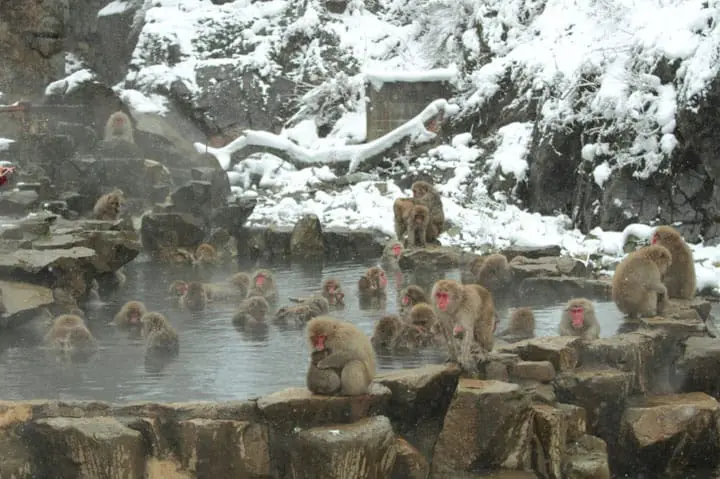Unique Festivals In Japan You Shouldn't Miss - With Video!

There are many, many shrines in Japan, and each shrine has its own unique festival. In this article, we'll be introducing unique festivals from Miyagi, Gifu, Hiroshima, Shimane, and Okayama, with videos!
Japan has a wonderful festival culture, and you can count on festivals being held almost anywhere in the country. About 80,000 shrines are registered, and it is said that large and small combined, approximately 300,000 festivals are held. In this article, we'll be introducing some of the more unique ones with video.
Dontosai Festival
The "Dontosai" is a traditional event held in shrines around Miyagi prefecture, where New Year's decorations are burnt and good health throughout the year is prayed for. It is said that the name of the festival comes from people long ago describing the sight of the vigorously burning fire as "dondon".
Osaki Hachimangu of Aoba-ku, Sendai, is a shrine of over 300 years, and its "Matsutaki Matsuri", one of the largest festivals in Miyagi, attracts about 100,000 visitors every year.
The "hadaka mairi" (naked pilgrimage), with people heading to the sacred flame in sarashi and shiro-shozoku, is a sight worth seeing.
*New Year's decorations (shogatsu-kazari) are decorations for the New Year. They are usually decorated before New Year's Eve.
Information
Address: Miyagi Sendai-shi Aoba-ku Hachiman 4-6-1
Dates: January 14
Website: Dontosai (Japanese)
©TBC
Akino Takayama Matsuri (Hachiman Festival)
The Takayama Matsuri is a representative festival of Takayama in Gifu prefecture, and is a traditional event held in the spring and fall. The annual Sanno Matsuri festival of Hie Shrine in the spring and the Hachiman Matsuri festival of Sakurayama Hachimangu Shrine in the fall are collectively called the "Takayama Matsuri".
The Takayama Matsuri is said to have originated from the late 16th century to the 17th century, and is considered one of the "Three Great Beautiful Festivals of Japan", for its carefully decorated street shops with sculptures, embroidery, and other master craftsmanship by Hida locals. There is also a traditional karakuri (mechanical doll) performance.
Information
Addres: Gifu Takayama-shi Sakuramachi 178
Dates: Sunday, October 9, 2016 - Monday, October 10, 2016 (October 9, 10 of every year)
Website: Takayama Festival
©CBC
Fude Matsuri
Kumano, Hiroshima is Japan's leading brush producing region. 80% of the domestic production is made here in Kumano. The Fude Matsuri (Brush Festival) began in 1935, and the 2016 festival will be its 82nd year. It is a popular festival that annually attracts about 50,000 people.
The brushes on sale are sold at a discount price of 20-40% off, and many visitors take this chance to purchase some to take home.
The makeup brushes are especially popular, and are even used by world-famous makeup artists who work with actresses in Hollywood and famous models.
One of the highlights of the festival is the "Taisaku Sekisho" - a calligraphy performance with a brush on a large piece of cloth, 5 meters in length and 6 meters in width. The six students of the Shodo (Japanese calligraphy) Club of Kumano High School in the video wrote various words, such as "What we learned from Shodo is the power to challenge."
Information
Address: Hiroshima Aki-gun Kumano Nakamizo 5-1-13
Dates: Spring Equinox Day (September 22)
Website: Fude Matsuri
©RCC
The Festival to Welcome the Gods at Izumo Taisha
Izumo Taisha is a shrine in Shimane always bustling with visitors, known for the god of marriage. The tenth month of the old Japanese calendar is called "Kannazuki" (the month with no gods) throughout Japan, but as the gods all gather from around Japan in the Izumo region, here the same month is called "Kamiarizuki" (the month where gods are present). On the tenth day of the tenth month of the old Japanese calendar, the high priest will read norito (religious words addressed to a deity) and welcome the gods from across the sea, namely from Inasanohama beach, the setting of one of Japan's founding myths.
The portable shrine in which the gods dwell temporarily heads to Izumo Taisha along Kamimukae no michi - "the street to welcoming the deity". After the festival to welcome the deity is held at the Izumo Taisha Kaguraden, the gods from around the world are consulted about marriages and other topics related to human relationships. During this season, the shrine is colored with the green of nature.
Information
Address: Shimane Izumo-shi Taishacho Kizukihigashi 195, Izumo Taisha
Dates: November 9 night - November 16 (Wednesday) ※Dates for 2016
Website: Izumo Taisha Kami Mukae Shinji - Kami Mukae Sai (Japanese)
©BSS
Saidaiji Eyo Festival
The Saidaiji Eyo festival is said to have a history of over 500 years. It is held on the third Saturday of February. At around 9 PM, about 9,000 naked men start to gather at Saidaiji Kannon-in, a temple facing the Yoshii River in Higashi-ku, Okayama. After cleansing their bodies at a watering place called the "koritoriba", they head to the oyuka of the main hall.
At 10 PM, the lights of the main hall are turned out, and two ceremonial sticks are thrown from the Gofukumado (window of good fortune) and the men fight to get these ceremonial sticks. The person who gets one of such st is called the "Fuku-otoko" (lucky man) and is said to have good luck during that year.
Information
Address: Okayama Okayama-shi Higashi-ku Saidaiji
Dates: February 20 *Dates for 2016
Website: Saidaiji Eyo (Japanese)
©RSK
In Conclusion
What do you think? Some of these festivals are even little-known to the Japanese people. We recommend you check out and participate in the local festivals of whichever region you're visiting!
MATCHA's promotional account for corporate and local government advertising. We aim to provide useful information to our readers in an enjoyable manner.



































![[Coupon Available] Attention Overseas Winter Sports Fans! Nagano's Sports Depot Has Evolved](https://resources.matcha-jp.com/resize/720x2000/2026/01/05-254819.webp)
![[2 hours from Tokyo ] 10 Quiet and Breathtaking Views of Mount Fuji in Yamanashi Hokuto City , Yamanashi - Part 2](https://resources.matcha-jp.com/resize/720x2000/2025/12/16-253037.webp)
